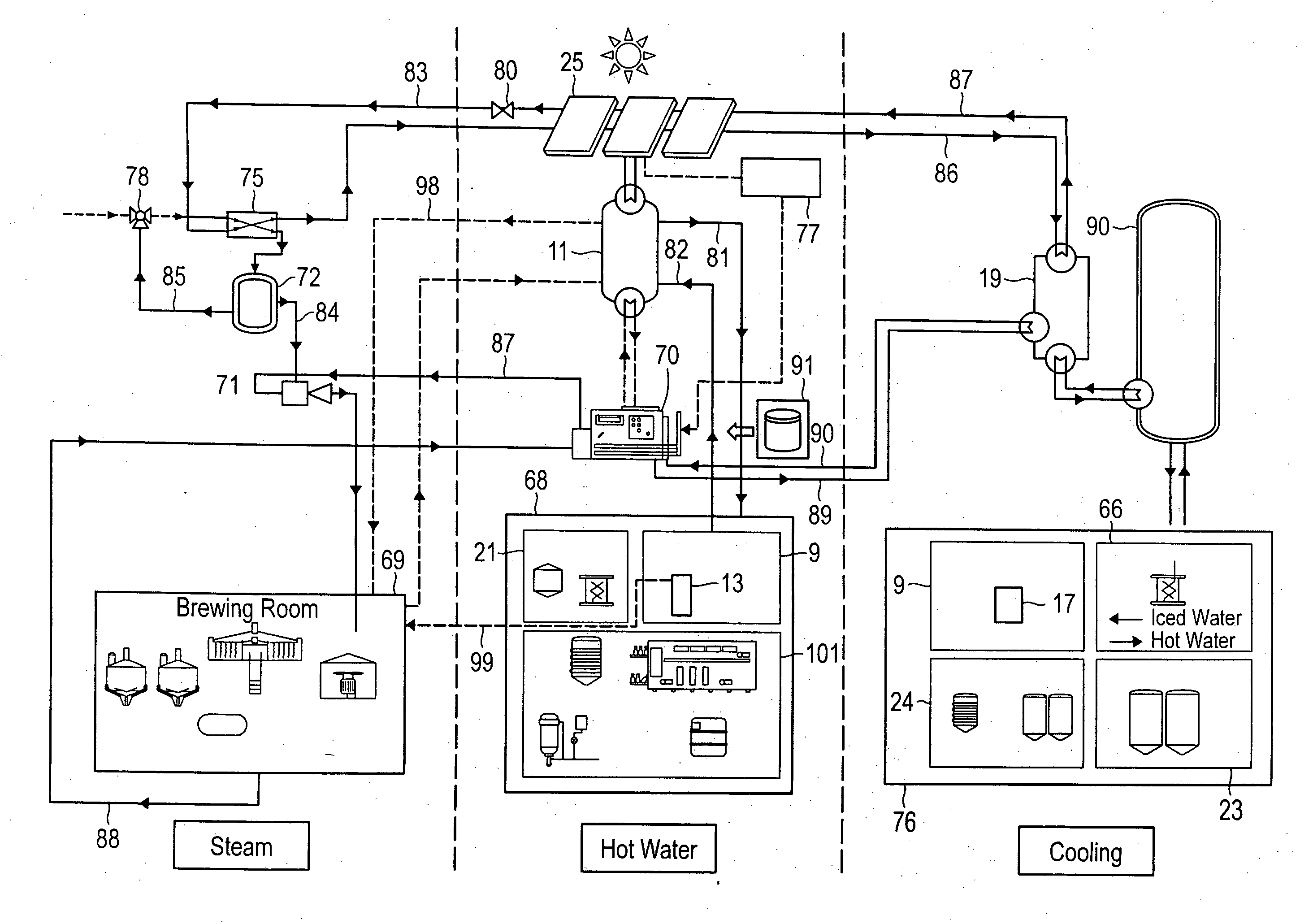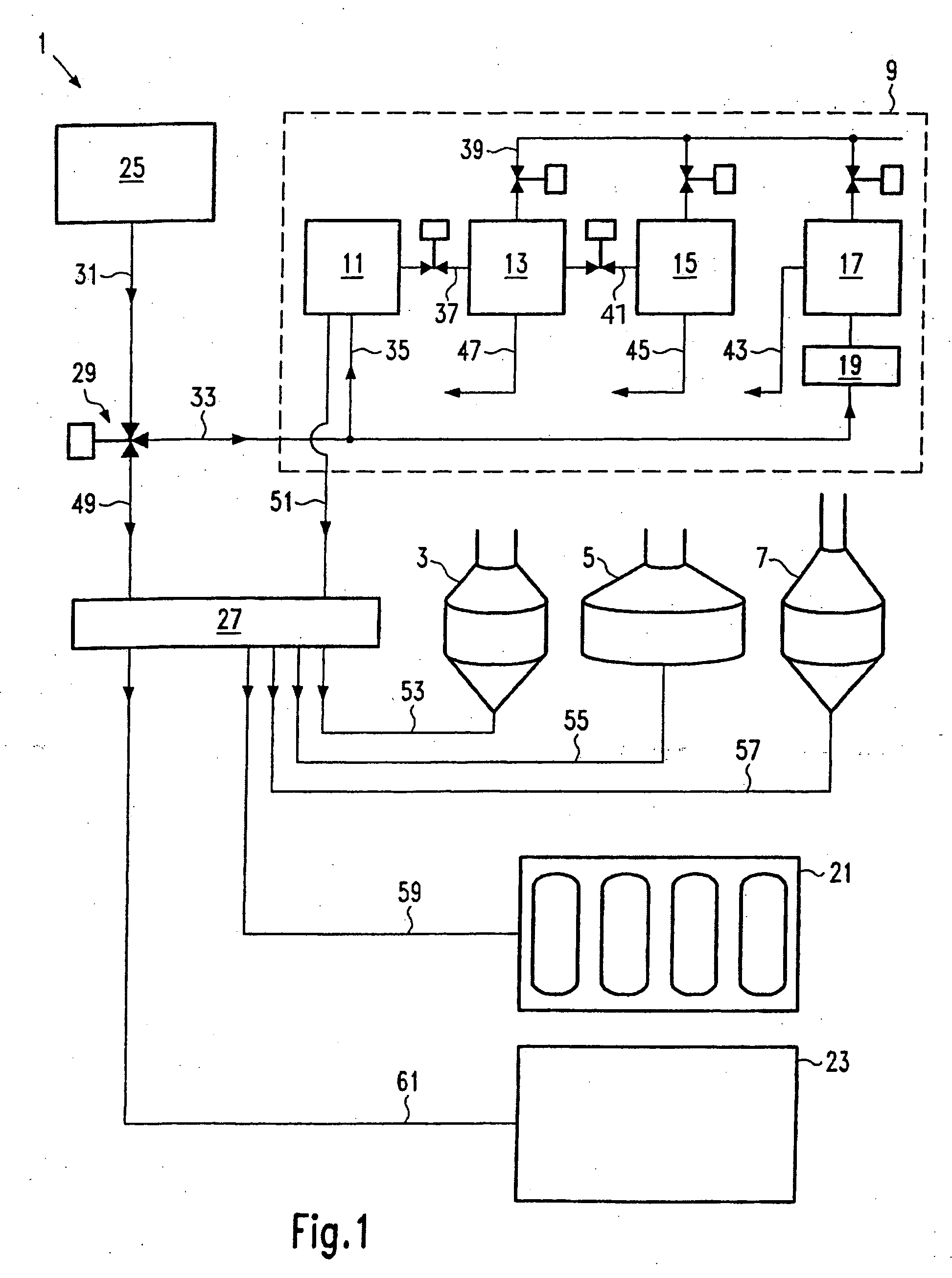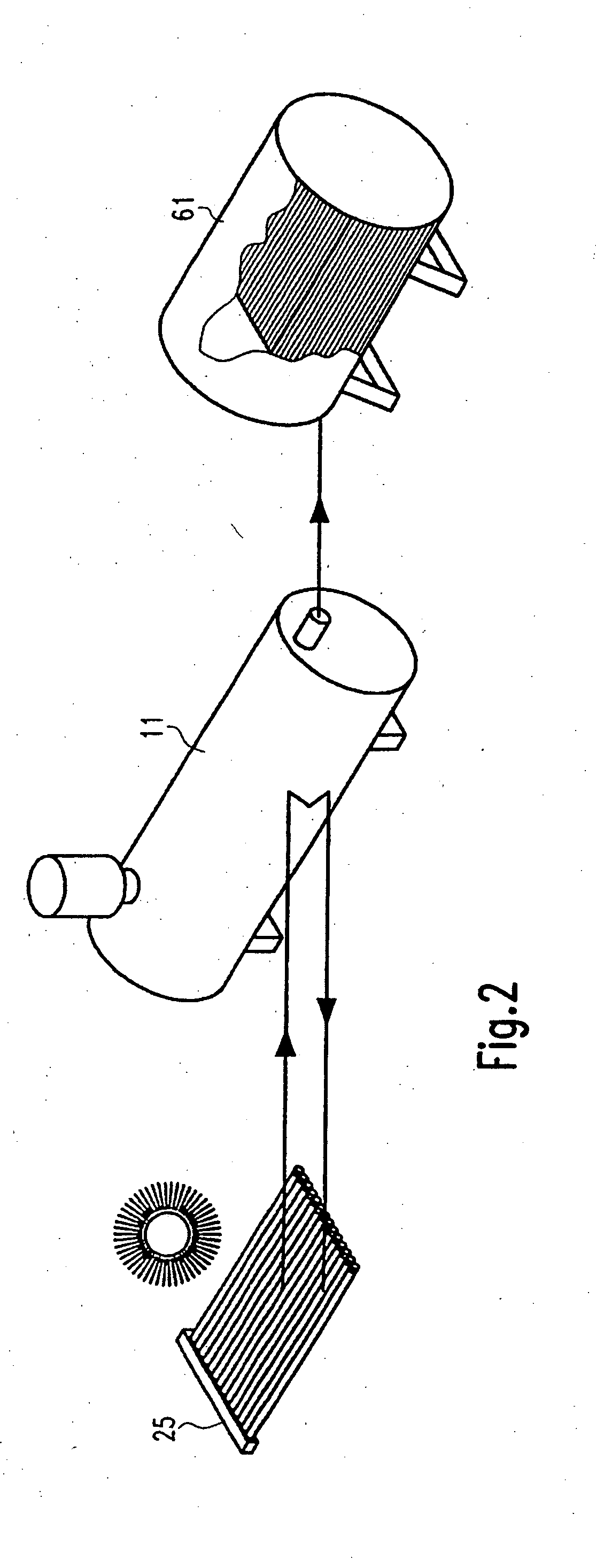Brewery plant and method
a technology for brewing plants and brewing methods, applied in indirect heat exchangers, machines using solar energy, light and heating equipment, etc., can solve the problems of not being independent of price increases and energy costs, and achieve the effect of facilitating an ideal supply of energy for individual loads
- Summary
- Abstract
- Description
- Claims
- Application Information
AI Technical Summary
Benefits of technology
Problems solved by technology
Method used
Image
Examples
Embodiment Construction
[0038]FIG. 1 shows a brewery plant 1 with a mash container 3, lauter tun 5, wort pan 7 and a water housing 9. The water housing 9 comprises several heat accumulators: a high-pressure hot-water tank 11, suitable for fluid temperatures of at least 120° C., in particular from 160° C. to 180° C., a warm-water tank 13, a cold-water tank 15 and an iced-water tank 17. A sorptive refrigerating plant 19 is used to produce the iced water. In addition the brewery plant 1 also has a CIP (Cleaning In Process) system 21. This system is used for the cleaning and disinfection of the brewery plant 1. Furthermore, a bottle room 23 is schematically illustrated. Here the bottling equipment and the bottle cleaning equipment for the brewery are located. Finally, the solar collectors 25 are illustrated in FIG. 1. They are used to cover at least part of the thermal energy requirement of the brewery 1. The solar collectors 25 are designed such that a fluid is directly or indirectly heated with the aid of th...
PUM
| Property | Measurement | Unit |
|---|---|---|
| temperature | aaaaa | aaaaa |
| temperature | aaaaa | aaaaa |
| temperature | aaaaa | aaaaa |
Abstract
Description
Claims
Application Information
 Login to View More
Login to View More - R&D
- Intellectual Property
- Life Sciences
- Materials
- Tech Scout
- Unparalleled Data Quality
- Higher Quality Content
- 60% Fewer Hallucinations
Browse by: Latest US Patents, China's latest patents, Technical Efficacy Thesaurus, Application Domain, Technology Topic, Popular Technical Reports.
© 2025 PatSnap. All rights reserved.Legal|Privacy policy|Modern Slavery Act Transparency Statement|Sitemap|About US| Contact US: help@patsnap.com



